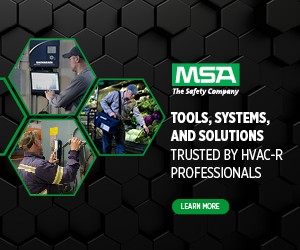President’s Message by Dave Rule

And nowhere is this innovation more visible than at IIAR’s Annual Industrial Refrigeration Conference and Exhibition.
This issue of the Condenser coincides with our 2016 annual conference – a time we set aside to come together from all corners of our industry to talk about the trends and technology shaping our business.
Whether you’re a longtime IIAR member, a first time attendee or a committee member dedicating your time and attention to one of our many projects, your contribution to this industry, and at this conference is vital.
While all corners of our business world are expanding, one central theme is shaping our business environment this year . . . the regulatory approach to HFC’s and other synthetic refrigerants.
Working through the rulemaking process, OSHA, EPA and the Department of Homeland Security have started to shape policy that may ultimately place synthetics and natural refrigerants on a more level playing field.
As the R-22 phase-out approaches the later stages of completion, regulatory agencies are more closely considering the safety and environmental impact of HFC and HFO refrigerants and proposing new rules that may significantly impact their use in our industry.
These changes . . . coupled with the introduction of new ammonia system technology . . . opens an opportunity for a broader range of end users in both the industrial and commercial markets to start considering natural refrigerants.
Given this important development, IIAR’s advocacy remains a top priority. We’ve been actively involved in making comments that promote the interests of our members.
Our staff and IIAR member volunteers have stepped up our advocacy programs, meeting with OSHA and EPA on a periodic basis in Washington D.C., at regional meetings across the country and on scheduled conference calls.
Several months ago the IIAR Staff and a coalition of member volunteers met with the Illinois Boiler Code Division and successfully stopped a pending requirement for end users to conduct periodic inspections on the interior of ammonia pressure vessels.
And, with the support of Jeff Shapiro and the Code Committee we have developed one of the most robust code agencies programs we have seen, designed to adopt IIAR Standards into building codes around the country.
IIAR has also used the last year to improve many of the IIAR member tools and services, beginning with the release of a new member app.
If you’ve downloaded the app, you’ll notice that it delivers a fantastic conference guide, with the ability to follow the technical program in detail, obtain your education credits and rate tech papers, panels and workshops.
But the capabilities of this app reach beyond an improved conference experience.
IIAR members will now have easier, password-free access to the member website as well as access to standards, bulletins and technical papers – all formatted for mobile devices. And, over the next year we’ll be expanding its functionality to provide additional access to IIAR publications and other services.
We’re also expanding our outreach this year by continuing to develop publications like the Condenser, the IIAR Connect member newsletter and our very popular webinar education series.
Meanwhile, IIAR committees are hard at work following the re-release of the IIAR-2 standard at the end of last year. IIAR-2 was a monumental effort, but far from slowing us down, its completion has energized our volunteer members, who are already taking the first steps towards new standards, code and advocacy projects.
In 2016, IIAR will begin work on a new RAGAGEP standard and a CO2 standard.
I’m pleased to announce that our organization is also launching its first ever certification effort – beginning with a certification program focused on the IIAR-2 standard.
This new curriculum will train all sectors of our membership in the use and application of the IIAR-2 standard, and eventually the entire suite of IIAR standards.
I’ve mentioned some big goals that IIAR is moving forward to meet. We’ve set the bar high, and all of these exciting projects take a significant effort from your staff to realize.
These projects also depend on the hard work of our volunteer committee members and board leaders, who often put their dedication to this organization before their own professional and personal obligations.
That dedication has put us in a stronger position than ever to pursue the new opportunities, more global mindset and important transitions that are setting the stage to make this new member year more exciting than ever.















